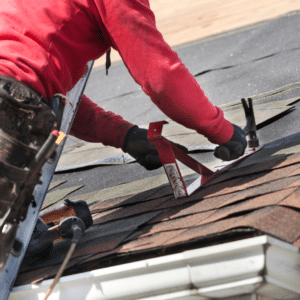As homeowners in Colorado, understanding the optimal roof replacement timing to avoid a 30% annual cost increase is crucial for protecting your investment and ensuring your home remains safe and secure against the elements. This article provides clear, expert advice tailored specifically to help you navigate this critical decision with confidence.
The optimal roof replacement timing to avoid a 30% annual cost increases is before major weather seasons to preempt damage and higher costs, when signs of wear are visible but before major leaks occur, and every 20-25 years as per most manufacturer’s warranties.
- Understanding the Impact of Colorado’s Weather on Your Roof
- Beat the Weather: Why Optimal Roof Replacement Timing Is Crucial
- Spot the Signs: When Your Roof Tells You It’s Time
- Maximize Your Investment: Leveraging Warranty and Lifespan Guidelines
- How to Plan Financially for Your Roof Replacement
- Choosing the Right Materials and Contractor
- Securing Your Home: The Benefits of Timely Roof Replacement
Key Takeaways
- Due to Colorado’s extreme weather, inspecting and maintaining your roof regularly is crucial to avoid accelerated damage. Plan these checks before harsh seasons start.
- Arrange roof replacements in late spring or early fall to bypass peak season costs and delays, ensuring your roof is ready for severe weather.
- Be vigilant for early signs of roof wear like missing shingles or leaks. Prompt repairs help avoid costlier issues and preserve your home’s structure.
- Know the warranty and lifespan of your roofing materials. Replace your roof within these guidelines to maintain warranty coverage.
- Start a savings plan for roof replacement upon purchasing your home. Explore financing and invest in durable, quality materials for long-term benefits.
- Choose roofing materials suited to Colorado’s climate and a contractor with a reliable warranty to guarantee a successful replacement.
We have much more to share on precisely identifying these signs of wear and the best practices for scheduling your roof replacement. Keep reading to ensure you make the most informed decision to safeguard your home and financial well-being.
Understanding the Impact of Colorado’s Weather on Your Roof
Colorado’s severe weather, ranging from heavy snowfalls to intense sun exposure and hailstorms, can significantly shorten a roof’s lifespan. Preparing for optimal roof replacement timing before extreme weather strikes can prevent costly damage and extend your roof’s longevity. Additionally, planning your replacement during off-peak seasons can help avoid the steep annual cost increases that typically accompany emergency post-storm repair demands.
Beat the Weather: Why Optimal Roof Replacement Timing Is Crucial
Optimal roof replacement timing is crucial not only for maintaining your home’s aesthetics but also for preventing costly repairs due to weather damage. Strategically scheduling your roof replacement during late spring or early fall can help you avoid the busy and expensive peak seasons. This thoughtful timing allows you to capitalize on milder weather conditions and less demand for roofing services, effectively reducing potential costs by up to 30%. Such planning ensures your home is well-protected and financially manageable.
Spot the Signs: When Your Roof Tells You It’s Time
Recognizing the signs that indicate it’s time for a roof replacement is critical for maintaining your home’s integrity and value. Visible indicators such as missing or broken shingles, significant granule loss from shingles, and persistent leaks during or after rainstorms are key alerts. Addressing these issues promptly as part of your optimal roof replacement timing strategy not only helps prevent more extensive and expensive damage but also ensures that your home remains safe and secure from environmental elements. This proactive approach can significantly mitigate future replacement costs and disruptions.
Maximize Your Investment: Leveraging Warranty and Lifespan Guidelines
Maximizing your roof’s value is crucial and involves a deep understanding of and adherence to the lifespan and warranty guidelines provided by manufacturers. For instance, a typical asphalt shingle roof is designed to last between 20 to 25 years. By planning your roof replacements within this recommended timeframe, you ensure optimal roof replacement timing, keeping your roof under warranty coverage which safeguards against unforeseen expenses. Adhering to these guidelines not only helps avoid premature replacements but also optimizes your financial investment in your roofing system.
How to Plan Financially for Your Roof Replacement
Strategic financial planning is essential for effectively managing the costs associated with roof replacement. Start by saving a small amount each month from the time you first purchase your home to create a dedicated roofing fund. Explore various financing options available from lenders or roofing companies, which may offer favorable terms. Additionally, consider the long-term financial benefits of choosing a durable and efficient roofing material, such as reduced energy costs and fewer repairs over time. These steps can significantly alleviate the financial burden of roof replacement.
Choosing the Right Materials and Contractor
The selection of the right materials and the choice of a trustworthy contractor are crucial for the success of your roof replacement project, especially in Colorado’s demanding climate. For durability and efficiency, consider these materials:
- Metal Roofing: Ideal for handling heavy snow and hail, metal roofs are durable.
- Concrete Tile: Concrete tiles can endure harsh sun, resist hail, and withstand high winds, making them well-suited for Colorado’s variable weather.
- Composite Shingles: A tough solution that withstands weather extremes while mimicking traditional aesthetics like wood or slate.
- Slate Roofing: Offering exceptional longevity and resistance to wind and hail, slate is a premium choice that can last over a century, though it comes with a higher initial cost.
Additionally, it is essential to select a reputable contractor that not only provides strong warranties but also operates with clear, transparent terms. A reliable contractor like Just Roofs and Gutters will ensure that the installation is executed correctly, providing peace of mind and securing your investment. This combination of choosing both the right materials and the right contractor will guarantee the best performance and longevity of your roof in Colorado’s challenging conditions.
Securing Your Home: The Benefits of Timely Roof Replacement
Strategically timing your roof replacement is not just about maintaining your home’s aesthetics; it’s crucial for protecting your investment and ensuring your home withstands Colorado’s harsh weather. By understanding when to replace your roof and recognizing the signs that it’s time, you can avoid unnecessary costs and extend the life of your roof. Proactively replacing your roof can also help you avoid the 30% annual cost increases typically associated with emergency replacements after severe weather damage. Take charge of your roof maintenance and replacement, ensuring your home is always protected and your investments remain sound.
Just Roofs & Gutters is here to assist you in navigating the complexities of roof replacement. Get your online roof estimates today! Protect your roof’s future effortlessly with our simple online estimator. Don’t wait until the weather forces your hand—take charge and confidently schedule your roof replacement today.
Q: How do roof color and material affect the optimal roof replacement timing?
The color and material of your roof can significantly influence its overall lifespan and optimal replacement timing. Darker colors tend to absorb more heat, which can accelerate wear in hotter climates, whereas lighter colors reflect sunlight, potentially extending the roof’s lifespan in sunny areas like Colorado. Materials also play a crucial role; metal roofs often last longer than asphalt shingles under similar conditions. Therefore, when considering the optimal roof replacement timing, evaluate both the material and color of your roof, as these factors can affect how quickly your roof might degrade and necessitate replacement.





